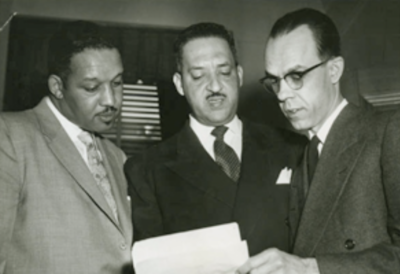

The U.S. Supreme Court got it right in 1954 when it declared that racially segregated schools were “inherently unequal.” The ruling by a unanimous court had both legal consequences and educational impact.
In addition to excising a core feature of Jim Crow customs and laws, court-ordered desegregation contributed to a rise in overall student achievement over half a century. Federal, state, and local governments invested more in public education and instituted school reforms that, as research has documented, resulted in higher reading and math scores and in improved prospects for Southern Black children.
And yet, the nonpartisan Government Accountability Office reports, “schools remain divided along racial, ethnic, and economic lines” across the United States.” In the 2020-21 school year, says GAO, about 18.5 million students — more than one-third in public education — attended a school in which three-fourths or more of the enrollment consisted of the same race or ethnicity. The GAO analysts looked at traditional public, magnet, and charter schools, not private schools.
“Forty-four percent of traditional public schools were predominantly same-race/ethnicity; the majority of these were predominantly White,” the GAO reports. “Nearly 90 percent of all K-12 students attended traditional public schools. More than a third (41 percent) of charter schools and about a quarter (26 percent) of magnet schools were predominantly same-race/ethnicity, the majority of which were predominantly Black or Hispanic. Although many magnet schools were established to assist in the desegregation of schools, about one in four magnet schools are predominantly same-race/ethnicity schools.”
Along with undoing an injustice, court orders to desegregate schools held out an implicit promise of narrowing divisions within American society and widening the road for upward mobility. Absent renewed momentum for addressing the GAO’s findings, what else would put more young people on a trajectory toward social and economic success?
From a new analysis of a massive data collection, Raj Chetty, a Harvard economics professor, has offered a complex response that can be distilled into one word: friendships. In schools, specifically, Chetty points to interactions among lower-income students with their more affluent peers that shape aspirations and career decisions.
For nearly a decade, Chetty has led teams of scholars in exploring opportunity and mobility. Their 2014 paper on “geography of intergenerational mobility” showed that powerhouse Southern cities, including Raleigh and Charlotte, were generating weak propulsion to lower-income young people.
Now, Chetty and his collaborators have published two papers on social capital, economic connectedness, and mobility, one of them focusing on high schools. They constructed their study by using data on 72.2 million users of Facebook ages 25 to 44 years and by examining “friendships” across lines of economic class in schools, colleges, religious institutions, workplaces, recreational groups, and neighborhoods.
“We conclude that the relationship between economic connectedness and upward mobility is not driven merely by the presence of high-SES (socioeconomic status) peers,” they write. “Instead, interaction with those peers is what predicts upward mobility most strongly.”
In other words, making a school more diverse in numbers matters, but what happens within the school, as well as interactions in the society, matters greatly. Some places — the report mentions West Charlotte High School — need more socioeconomic integration as a precondition for economic connectedness. Some schools may benefit from shifting internal arrangements.
For example, the report cites a California high school of more than 3,000 students that has attempted to overcome “within-school segregation” by assigning 9th graders to “intentionally diverse ‘houses’ or ‘hives.’” A high school in Texas underwent large-scale construction to redesign its architecture to provide more spaces for students to interact.
Of course, you can’t force high school students to become friends. But, as the Chetty scholars argue, public policies surely can influence the social and institutional structures that facilitate friendships and cross-class interactions.
Public schools are not the only source of propulsion for upward mobility. Still, public schools need the support and resources to serve effectively as crucial places where the sons and daughters of Americans from all walks of life come together to learn and prepare for their futures.




